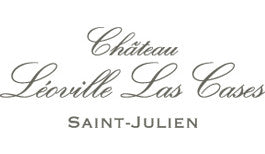Château Leoville Las Cases
| Region | Bordeaux (Francia) |
|---|---|
| Foundation Year | 1840 |
| Vineyard hectares | 97 |
| Address | Rue de l'École, 33250 Saint-Julien-Beychevelle, Francia |

Château Léoville Las Cases is part of the small circle of the oldest estates in the Médoc region and has always been linked to the territory's most important lineages. Following the expropriations of noble estates during the period of the French Revolution, in the years between 1826 and 1840, the domaine was divided into several estates. The Léoville Las Cases family managed to keep about 3/5 of the old estate and create the new domaine, which preserved the historic part of the old vineyard. Since the 19th century, the estate has always remained in the hands of the Léoville Las Cases family and is now managed by Jean-Hubert Delon, who continues the tradition in the name of excellence.
Château Léoville Las Cases covers a total of 55 hectares, in the area that stretches from the village of Saint-Julien toward Château Latour. The estate is a veritable Clos, surrounded by an ancient stone wall, which demarcates its boundaries. The soils are quite heterogeneous and mostly alluvial, created of the Gironde estuary over the millennia. Most of the soils are composed of pebbles and sands or pebbles and clays, but there is no shortage of areas with deep, compacted clays, which also often outcrop to the surface. The proximity of the Atlantic Ocean and the great estuary, create a temperate microclimate, which averts the danger of spring frosts and allows complete and excellent ripening of the grapes, with particularly intense aromas of elegant.
In keeping with the ancient custom of the Médoc lands, the grape varieties present are the historical ones of the area, particularly Cabernet Sauvignon, Merlot and Cabernet Franc, which reach their maximum expression in this area. The vines have an average age of more than 50 years and are planted at the very high density of 8,600 plants per hectare. The low yields and careful selection of the best bunches, allow grapes of exceptional quality to be brought to the winery. The grape varieties are vinified separately, following the different harvest times, and only after long aging in oak barrels are the wines blended to create the final cuvées.